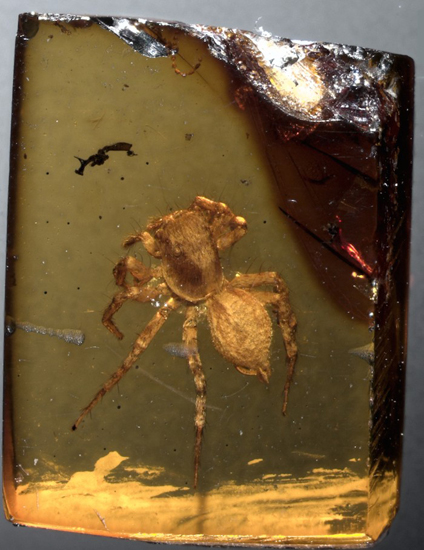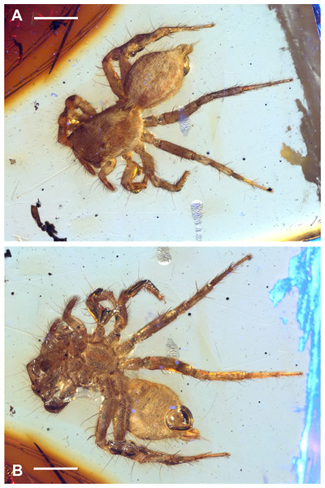Eureka! We Have a New Fossil Spider
Maevia eureka – Miocene Spider
Researchers have described a new fossil species of jumping spider found embedded in a piece of amber that dates from the early-mid Miocene. The beautifully preserved specimen was collected from lignite-sandstone sediments that date from between 23 and 15 million years ago. The little spider has been assigned to the Salticidae (jumping spiders) and it close resembles living species of jumping spider such as Maevia poultoni which is also found in the New World.
The Newly Described Miocene Spider M. eureka Preserved in Amber
Picture credit: PeerJ
The First Jumping Spider Species Described from Chiapas Amber
The specimen was found near to the town of Totolapa in Chiapas, south-western Mexico. Writing in the academic, peer-reviewed journal “PeerJ”, the authors Francisco Riquelme, (Universidad Autónoma del Estado de Morelos, Jojutla, Morelos, Mexico) and Miguel Menéndez-Acuña (Universidad Autónoma del Estado de Morelos, Cuernavaca, Morelos, Mexico), conclude that this fossil represents the first jumping spider species to be described from Chiapas amber.
Dorsal and Ventral Views of Maevia eureka
Picture credit: PeerJ
The picture above shows two views of the fossil spider (A) dorsal view, seen from the top down and (B) ventral view, seen from underneath. The scale bar equals 1 mm. The fossil marks the southernmost record of the Maevia genus in North America. The story of its discovery explains the trivial name “eureka”. The amber piece containing the fossil was found by chance as field team members were digging a latrine.
Visit the Everything Dinosaur website: Everything Dinosaur.



